The African American 761st Tank Battalion, the “Black Panthers,” had built a distinguished, indeed heroic record of service in the fall and winter of 1944-1945. Entering combat in early November 1944 attached to the 26th Infantry Division, they had captured towns like Morville-les-Vic and Guebling against strong enemy resistance. Then, in the latter stages of the Battle of the Bulge, attached to the 87th Infantry Division, they had engaged in fierce fighting for the town of Tillet. Every time they fought bravely, and every time they emerged victorious.
But the casualties had been heavy. All too often, decorations—when the white US Army hierarchy chose to award them—were bestowed posthumously. Wear and tear on equipment, especially to trucks and the workhorse M4 Sherman medium tanks that made up the bulk of the Black Panthers’ striking power, increasingly forced the men to make use of M5 Stuart light tanks to carry supplies to frontline units, perform reconnaissance, and even engage in combat.
A good unit like the 761st could expect little rest, however, at a time that demanded all combat-capable formations to be deployed to the front. And so, at the beginning of February, the Black Panthers were sent 140 miles north to the town of Jabeek on the Dutch-German border. The men were pleasantly surprised here to be welcomed as liberators by the people of Holland—often they were better treated, in fact, than they were by their white fellow Americans. Over the next few weeks the battalion worked with the 79th Infantry Division to push the line forward to the Rhine River, capturing several important towns and railway junctions. And they crossed into Germany on March 3.
The crescendo of the 761st Tank Battalion’s WWII service began a few days later, when it was moved again by train and attached to the 103rd Infantry Division in conjunction with several other African American units, most notably the crack 614th Tank Destroyer Battalion. Together these units made up part of the US Seventh Army, then preparing for the final drive into Germany. Their mission, starting on March 15, was to breach the Siegfried Line in the vicinity of Bobenthal near Germany’s Saar region—straight into the highly defensible Haardt mountains.
Casualties racked up quickly as the Black Panthers threaded their Shermans along winding mountain roads. Enemy resistance was spotty, but most of the roads were heavily mined and several tanks were blown up. A week into the advance, most of the 761st was organized into “Task Force Rhine,” and told to push straight through the German defenses and into Bavaria.
A typical action occurred on March 20, when tanks of A Company worked with infantry to clear out the heavily defended town of Niederschlettenbach. Encountering pillboxes, dug-in anti-tank guns, mortars and infantry, 1st Lieutenant Harold Kingsley dismounted his tank, moved forward, and, under strong enemy fire, directed his tanks and supporting infantry to take out the German positions one at a time. Job done, he remounted his tank and moved forward.
As this episode indicated, the Black Panthers were tested, veteran troops by now. They were professionals. The fighting was relentless, and continued day and night. But the 761st Battalion tank commanders moved efficiently and methodically, unnerving the German defenders. Within a few days the Siegfried Line was broken, and enemy troops came forward to surrender in increasingly large numbers. By March 23, the Black Panthers had destroyed hundreds of enemy vehicles and heavy weapons, inflicted 4,000 casualties and captured nearly as many prisoners.
Crossing the Rhine at the end of the month, the Black Panthers participated in the vast encirclement of German forces in the Ruhr Pocket. Prisoners were terrified to be captured by black soldiers, believing, thanks to their own propaganda, that they could expect no mercy from such “savages.” African Americans of the 761st learned not to rise up out of their tank hatches until the Germans came close, lest the surrendering troops see their black skins, howl in terror, and run away. One surrendering German officer asked, “how many Negro Panzer divisions are there?”
A grimmer encounter took place on May 2, when the tankers liberated Gunskirchen concentration camp in Austria, discovering some 15,000 Hungarian Jews near death from starvation. Horrified, the tankers did everything they could to help, but could not stay long before being ordered to move on, reflecting as they departed on the limits of human cruelty. Three days later, on May 5, 1945, the 761st Tank Battalion entered the Austrian town of Steyr. Across the Enns River, which ran through town, Russian tanks of the 1st Ukrainian Front pulled up.
Tanker Leonard Smith received the shock of his life when a stout Russian woman tanker approached him. Shouting “America! America! America!” she swathed him in a tight hug until he could hardly breathe.
Although the war was over, the Black Panthers’ struggle continued. Like their white comrades, African American tankers struggled with memories and, in some cases, post-traumatic stress. Unlike white soldiers, however, black soldiers dealt with segregation and the often savage racial prejudice characteristic of this period in American history. Men who had fought bravely for their country in severe combat alongside white infantrymen, who had depended for their lives on the black tankers’ support, now found themselves treated as second-class citizens and sent to sit in the back of buses behind white people who had never left home.
Recognition of what the Black Panthers had accomplished was long in coming. On January 24, 1978, President Jimmy Carter bestowed a Presidential Unit Citation on the 761st Tank Battalion. And on November 10, 2005, a monument to the unit was unveiled at Fort Hood, Texas, with several surviving veterans in attendance.
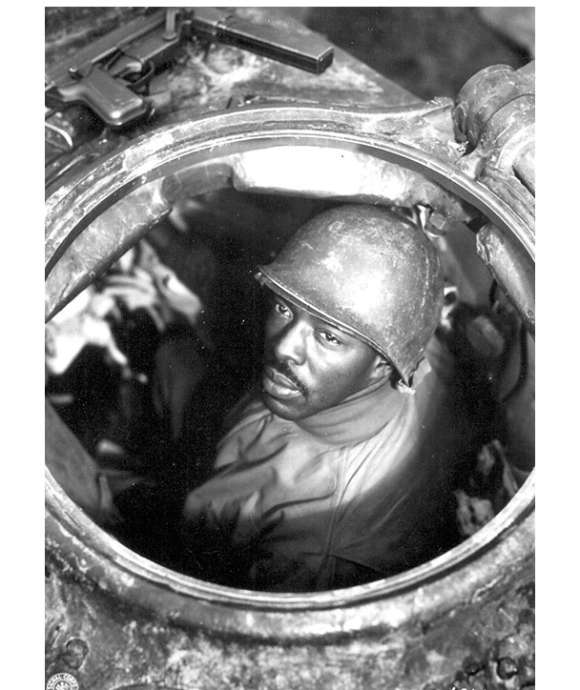
Black Panthers in the Snow: The 761st Tank Battalion at the Battle of the Bulge
By January 1945 the African American soldiers of the 761st Tank Battalion, the Black Panthers, were battle-tested veterans. But they would encounter one of their toughest fights in January 1945 during the Battle of the Bulge.
Ed Lengel, PhD
Edward G. Lengel is the former Senior Director of Programs for the National WWII Museum’s Institute for the Study of War and Democracy.
Cite this article:
MLA Citation:
APA Citation:
Chicago Style Citation:
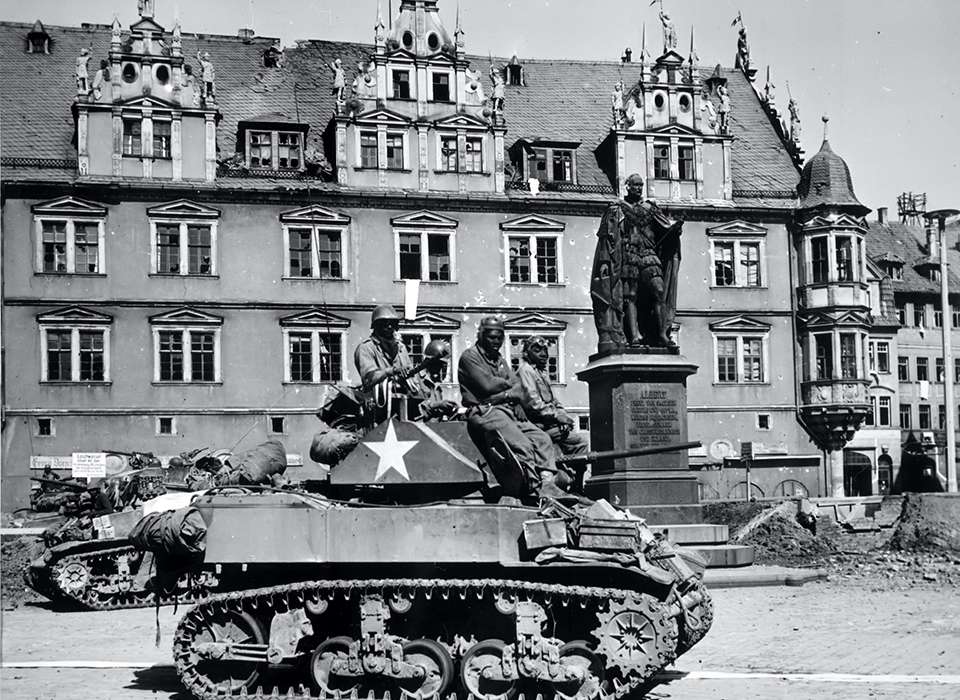
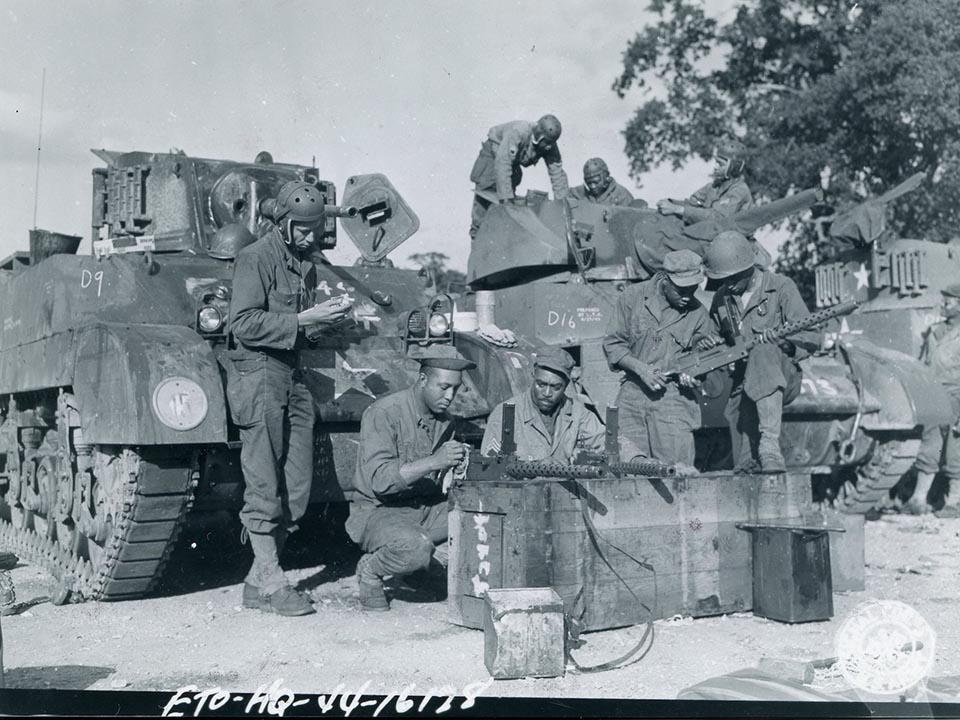
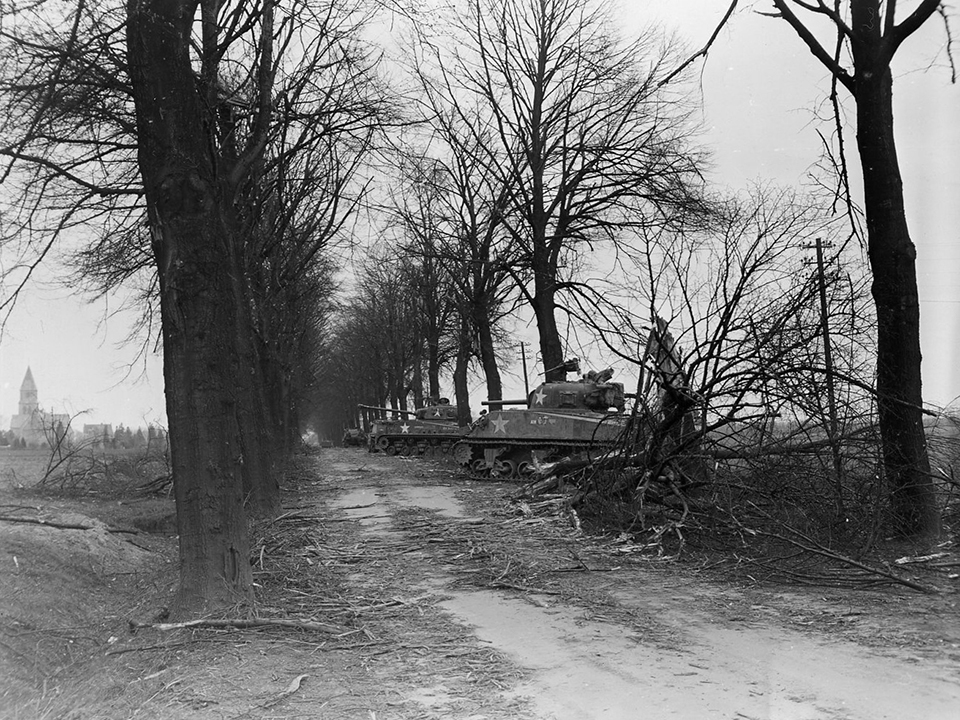
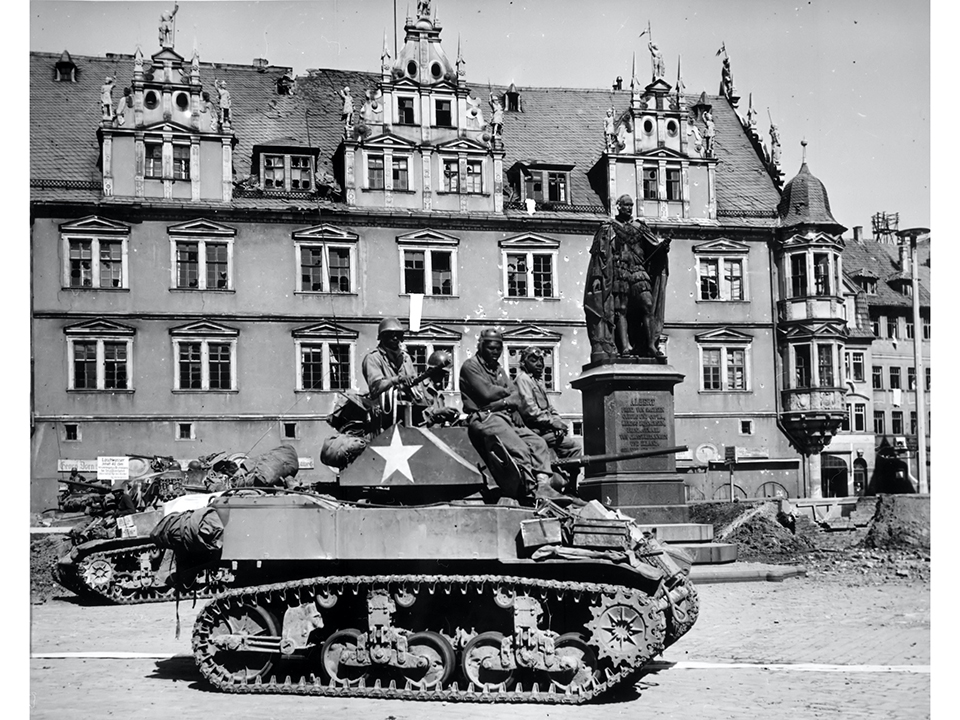





![Max Fuchs, New York City cantor, sings as Rabbi Sydney [sic] Lefkowitz, Richmond, VA, conducts the first Jewish services from Germany.](/sites/default/files/styles/max_650x650/public/2025-10/image1.jpg)


